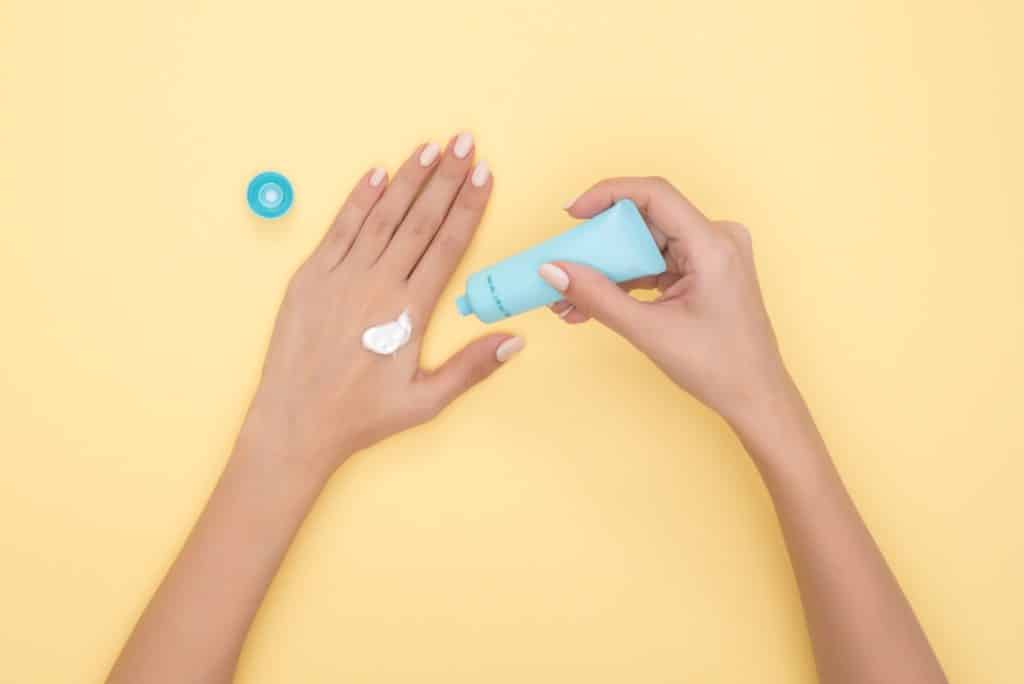If you shouldn’t put it in your body, don’t put it on your body! One of the things we all love to cover our body in head to toe when it’s good weather is, of course, sun cream. However, did you know that it could be a huge source of toxins?

Many of the chemicals used to make sun cream are made from petroleum through a refining process – as most of you who follow our posts know most things that are processed, man-made, and are not in their original form as nature intended, are not so good for us. The problem with using chemicals on your body is that firstly they do not just sit innocently on the surface – they enter it. Many of these chemicals can be measured in blood, breast milk and urine samples after application. What’s more concerning is that these chemicals can act as endocrine disruptors – meaning that they mimic or block the effects of the natural hormones in your body which can lead to imbalances and a whole host of potential issues.
If that wasn’t reason enough then sun cream is also a huge thing that is responsible for the destruction of coral reefs around the world. Toxins from sun cream covered people snorkelling on holiday are severely damaging coral reefs which take decades to grow. These are the same chemicals which damage us.
Clearly, overexposure to the sun can have its own consequences, so what can you do? What is fascinating is that naturally occurring things actually have natural SPF which can be utilized by your body in the same way. In fact, most synthetic things we produce like drugs and chemicals are designed to mimic the function of a natural substance, however, companies cannot patent them so will make a synthetic form of it to sell. Some natural substances which contain SPF qualities include:
- Carrot seed oil – SPF 38-49
- Coconut oil – SPF 4
- Red raspberry seed oil – SPF 8 UVA and SPF 28-50 UVB
- Almond oil – SPF 5
- Jojoba oil – SPF 4
- Shea butter – SPF 6-10
- Zinc Oxide (Non-Nano) – SPF varies with the amount you use but effectively works by reflecting UV rays (must be a non-nano powder so it does not get absorbed through the skin)
So the obvious answer is to make it yourself! Here is a recipe we use and find works for us which is pretty impressive considering Dr Judith is a typical fair headed Norwegian, and Dr Jamie has some strong ginger and Scottish genes.
*This natural recipe has a rough SPF of around 25-30 and has the potential to prolong your exposure to the sun and protect your body, however we would not recommend basking in it on the beach for 6 hours straight! If you are going to do something like that, which is fairly unnatural for us to do, then you’re going to need something more unnatural to do that (ie look at the behaviour of most animals – they seek shade from the sun when it’s hot). Listen to what your body is telling you and if you are turning red then you should probably cover up or find some shade. The protective value will vary a lot with the ingredients you use, quality of the ingredients and how much you put on your body. You also should play around with the recipe to find what works for you – if you know you burn easily, put more zinc oxide in.

Ingredients (order online):
- 1/2 cup of almond oil
- 1/4 cup coconut oil
- 1/4 cup of beeswax (makes it more waterproof and thickens it)
- 2 tablespoons of non-nano zinc oxide
- 1 teaspoon of red raspberry seed oil
- 1 teaspoon of carrot seed oil
- 2 tablespoons of shea butter
- Few drops of lavender oil for smell
Instructions:
- Put all ingredients apart from zinc oxide in a glass jar
- Fill a medium saucepan with some water and put on medium heat and place jar containing the ingredients in it so as the water heats it will melt the ingredients.
- Stir a few times until everything is melted and then add zinc oxide and stir in well.
- Pour into a container which is lightweight and seals well. Try and find one under 150ml so it is accepted by airport security.
If you need to make the recipe stronger, simply melt it back down in the same process and mix in the extra zinc oxide. If it just isn’t working for you, or you need to buy sun cream from a shop – we advise you to choose a mineral based product which often lacks some of the toxic chemicals other products may have.

That’s it!
Leave a comment if you have any issues but we hope you like your non-toxic sun cream and tag us on social media if you like it!
Dr Judith






